
Insights and Research
Our latest data and thinking on growth, innovation, technology, and sustainability
Tech Landscape Research
Supplier Database
We track 4,083 solution providers in the global enterprise technology ecosystem. Our data supports our internal team and clients in conducting due diligence, mapping trends, and sourcing technology.
Case Study Database
We have catalogued 19,090 case studies to help our clients identify new solutions, evaluate technology maturity, and benchmark their peers.
Compare solutions and gain insights into tech adoption trends by analyzing real case studies.
Case studies are mapped to suppliers, use cases, and industries for easy reference. Quickly find and benchmark solutions based on your current needs.
Case studies are mapped to suppliers, use cases, and industries for easy reference. Quickly find and benchmark solutions based on your current needs.
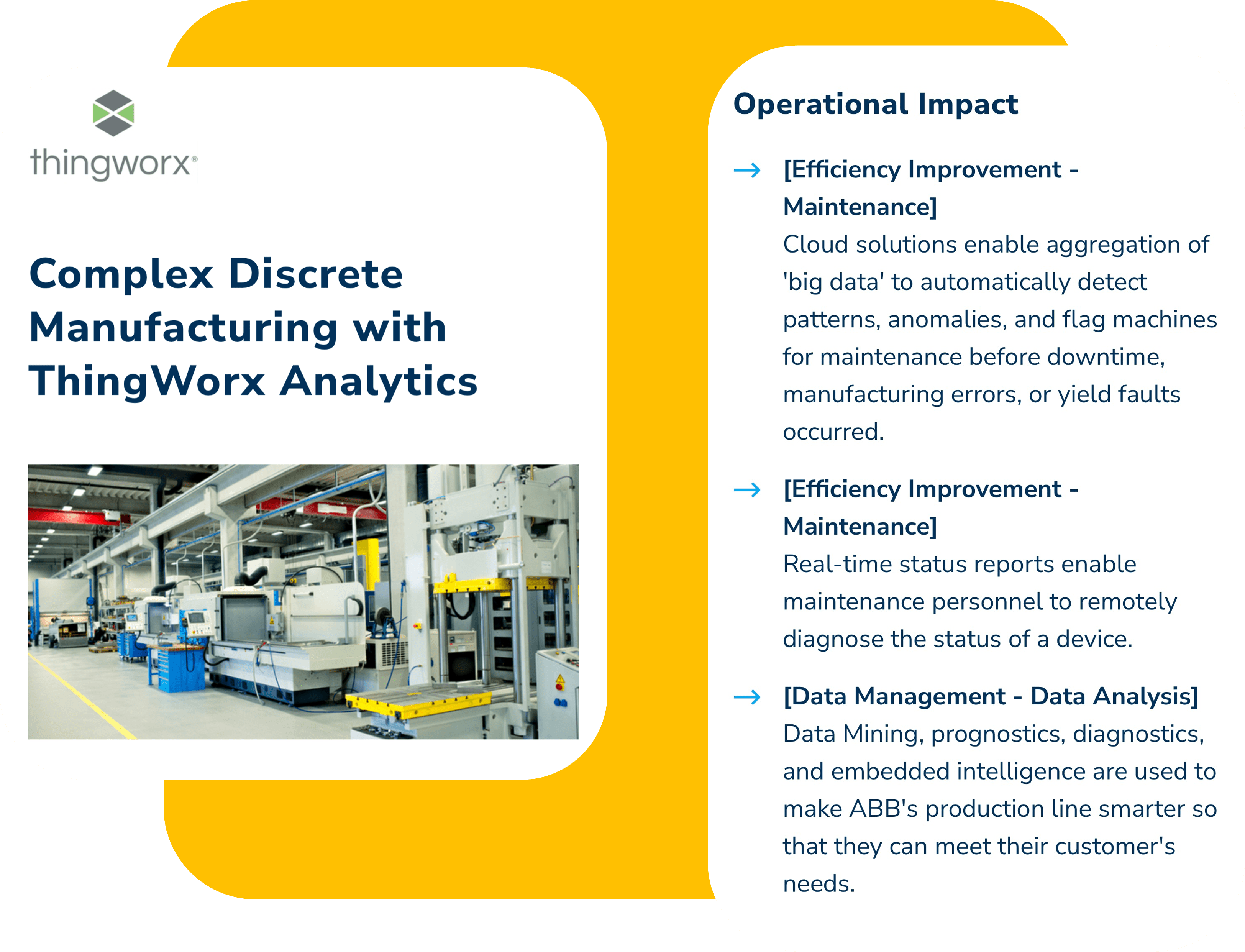
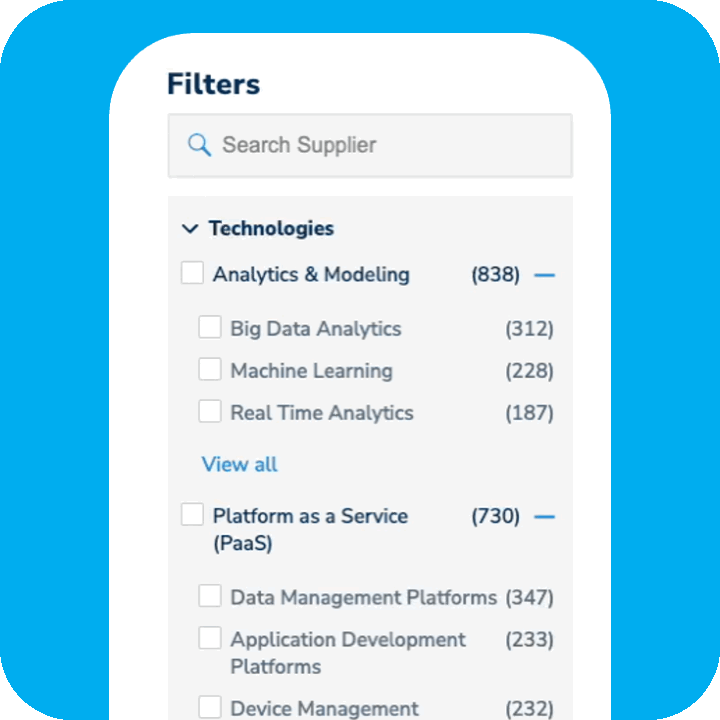
Discover startup specialists and leading tech providers matching your requirements.
You can filter suppliers by more than 300 variables across technologies, industries, functions, use cases, country, revenue and more.
You can filter suppliers by more than 300 variables across technologies, industries, functions, use cases, country, revenue and more.
Gain access to detailed supplier profiles and compare multiple suppliers.
Download vendor profiles to support shortlisting and internal assessment of potential vendors.
Download vendor profiles to support shortlisting and internal assessment of potential vendors.
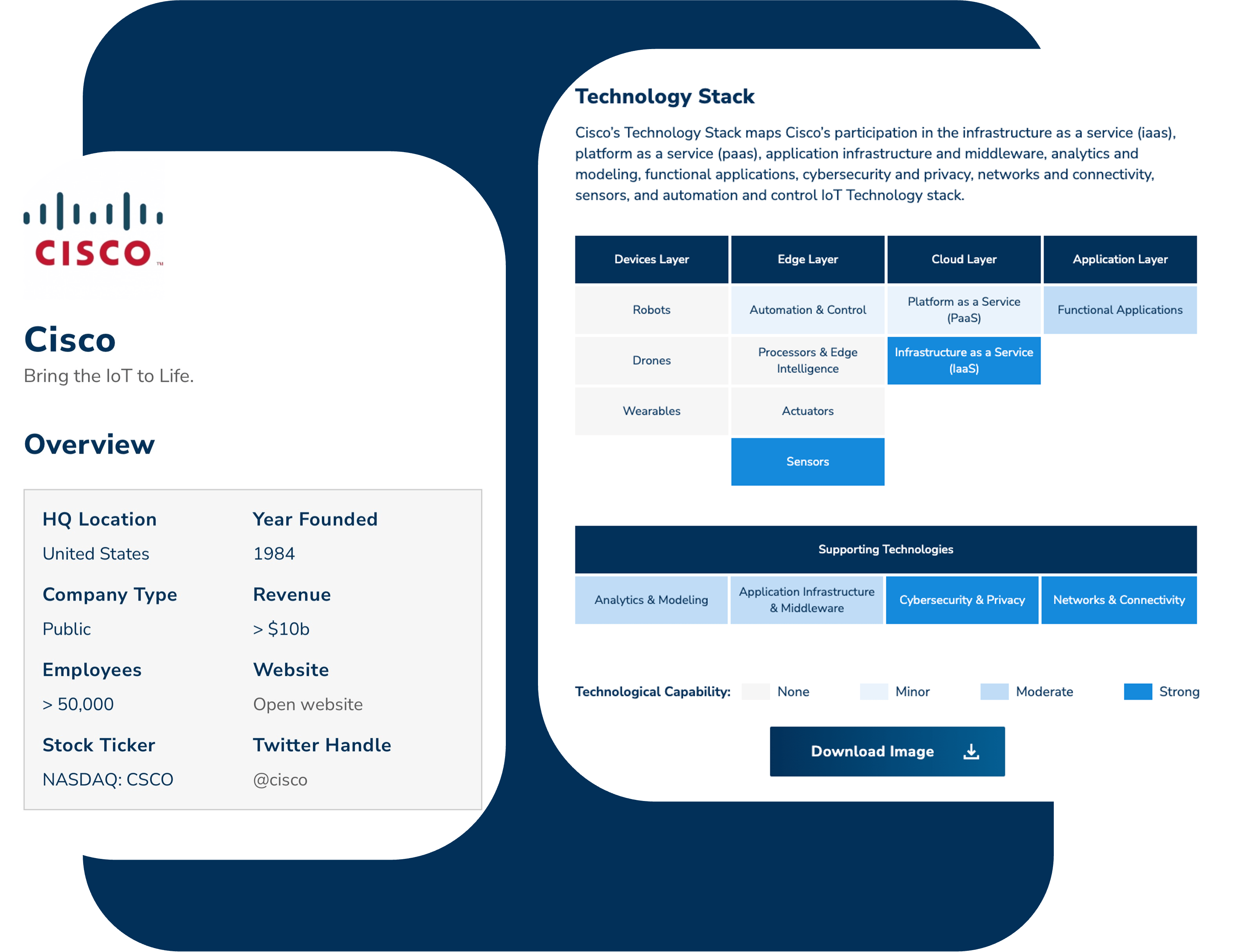
Our Sustainability Insights
Database Stats
Recent Episodes

Ep. 9
From Niche to Necessity: Transforming Businesses with Sustainability and Cross-Functional Leadership
Elisabeth van Ebbenhorst Tengbergen, Partner at KIENBAUM

Ep. 8
Woven Together: Multi-Stakeholder Efforts to Make the Cotton Industry Sustainable
Alia Malik, Chief Development Officer, Better Cotton Initiative

Ep. 7
The Power of Small: How Tiny Habits Lead to Big Sustainability Wins
Boris Koenig, MD at BOSOO

Ep. 6
Transforming Tourism: Insights on Responsible Hospitality
Sarah Habsburg, Responsible Hospitality | Marketing & Training
Our Innovation Insights
Latest Insights

Insights
Innovating in China 2025: MNCs Find Opportunity Amid Slowdown
Despite geopolitical headwinds and declining FDI, global companies are quietly increasing their innovation investment in China and redefining what “China for China” means in practice. In this Insight piece we share the main findings from our our 2025 Innovating in China benchmarking study.
Learn more

Insights
Navigating AI Governance in China: What You Need to Know
China has moved at remarkable speed to weave Artificial Intelligence (AI) into core industries, from financial services and healthcare to manufacturing and mobility. But while its ambition is to lead globally in AI, the government has been equally clear: growth cannot come at the expense of national security, social stability, or data sovereignty. The resulting governance model is both strict and enabling. It aims to accelerate adoption while ensuring some guardrails, a duality that foreign multinationals (MNCs) must carefully navigate if they want to innovate and compete in China.
Learn more

Insights
AGP China Technology Report - Swarm Robotics
Swarm robotics is poised to redefine the landscape of the robotics industry, promising significant advancements in automation and efficiency across multiple sectors. Marked by its ability to perform complex tasks through decentralized coordination, swarm robotics harnesses the power of collective intelligence, offering robust and scalable solutions. This technology is particularly transformative in fields such as agriculture, logistics, and defense, where flexibility and precision are paramount.
The strategic importance of swarm robotics is underscored by its alignment with global technological trends, including advancements in AI and machine learning. Product differentiation in swarm robotics is evident in its ability to adapt to various environments and tasks, driven by real-time data processing and autonomous decision-making. The ecosystem supporting swarm robotics is strengthened by international collaborations, research partnerships, and substantial investments, facilitating rapi
Learn more

Insights
AGP China Technology Report - Perception Systems (Sensors & Computer Vision)
The rapid development of perception systems, incorporating advanced sensors and computer vision, has reshaped the robotics industry landscape, establishing itself as a key technological pillar. These systems enhance a robot's ability to perceive and interpret its environment, enabling functionalities that were previously unattainable.
The technological advancements in perception systems have been profound. Innovations such as high-resolution 3D cameras and AI-driven vision processing have propelled the capabilities of robots in areas such as autonomous navigation, object recognition, and spatial awareness. These technologies empower robots to operate with greater autonomy and adaptability, critical for applications ranging from manufacturing to healthcare.
Product differentiation within the robotics industry is becoming increasingly reliant on the sophistication of perception systems. Companies are leveraging these technologies to create distinctive features that set their products a
Learn more

Insights
AGP China Technology Report - Power Systems & Battery Technologies
The integration of advanced power systems and battery technologies is revolutionizing China's robotics industry, cementing its position as a key player on the global stage. By leveraging its vast industrial ecosystem and strategic government initiatives, China has rapidly advanced in developing energy-efficient and high-performance robotic systems. These advancements align with the nation's broader innovation agenda, emphasizing technological self-reliance and international competitiveness.
China's robust supply chain for battery production, dominated by industry leaders like CATL and BYD, provides a significant competitive edge. This control over critical components ensures a sustainable and cost-effective supply, which is crucial for the mass production and deployment of energy-efficient robots. Investments in research and development, supported by government policies like the "Made in China 2025" initiative, have accelerated innovation in power management and energy storage technol
Learn more

Insights
AGP China Technology Report - Security & Surveillance Robots
China's security and surveillance robotics sector stands at the forefront of technological innovation and strategic growth within the robotics industry. As a key component of China's national innovation agenda, this sector exemplifies the country's commitment to advancing AI and automation technologies. The strategic integration of these technologies has facilitated the development of sophisticated security and surveillance solutions that are increasingly deployed across various industries, enhancing efficiency and safety in both public and private sectors.
The rapid progress in this sector is driven by several factors, including robust government support, significant investments in research and development, and the fostering of a dynamic ecosystem that encourages collaboration among domestic and international entities. These efforts have positioned China as a global leader in robotics, with an impressive trajectory that highlights its ability to innovate and adapt to emerging technol
Learn more

Insights
AGP China Technology Report - Security & Surveillance Robots
China's security and surveillance robotics sector stands at the forefront of technological innovation and strategic growth within the robotics industry. As a key component of China's national innovation agenda, this sector exemplifies the country's commitment to advancing AI and automation technologies. The strategic integration of these technologies has facilitated the development of sophisticated security and surveillance solutions that are increasingly deployed across various industries, enhancing efficiency and safety in both public and private sectors.
The rapid progress in this sector is driven by several factors, including robust government support, significant investments in research and development, and the fostering of a dynamic ecosystem that encourages collaboration among domestic and international entities. These efforts have positioned China as a global leader in robotics, with an impressive trajectory that highlights its ability to innovate and adapt to emerging technol
Learn more

Insights
AGP China Technology Report - Drones & Unmanned Aerial Robotics (UAVs)
The evolution of China's Drones & Unmanned Aerial Robotics (UAVs) industry epitomizes the nation's strategic focus on technological leadership and innovation. With a robust government-backed agenda, China has rapidly positioned itself as a formidable global player in the UAV market. This growth is driven by advancements in technology, strategic industry partnerships, and a comprehensive ecosystem that supports both innovation and commercialization.
Technological progress within the UAV sector has been substantial, with significant improvements in autonomy, payload capacity, and operational versatility. Chinese manufacturers, benefiting from economies of scale and state support, have achieved considerable success in both domestic and international markets. This has led to the development of a diverse range of applications, from agriculture and logistics to emergency services and environmental monitoring.
Despite these advances, the industry faces ongoing challenges. Intellectual prope
Learn more

Insights
AGP China Technology Report - Robot Operating Systems
The adoption of Robot Operating Systems (ROS) represents a transformative shift in the robotics industry, acting as a catalyst for innovation and accessibility. ROS's open-source framework has democratized technology, enabling both established entities and new players to develop advanced robotic solutions with reduced barriers to entry. This fosters an environment ripe for technological advancement and competitive diversity.
Significant strides in ROS, particularly with the introduction of ROS 2, have addressed critical industry demands such as real-time operation, enhanced security, and increased hardware compatibility. These improvements have expanded the applicability of ROS into complex fields like autonomous vehicles, industrial automation, and healthcare robotics, thus reinforcing its strategic importance. The vibrant ROS community, characterized by continuous contributions and collaborations, has cultivated an ecosystem that supports rapid technological iterations and scalabili
Learn more

Insights
AGP China Technology Report - Cleaning Robots
The cleaning robot industry stands as a transformative force within the broader robotics sector, marked by its rapid technological advancements and significant market growth. The global cleaning robot market is projected to expand from USD 5.98 billion in 2024 to USD 21.01 billion by 2030, exhibiting a compound annual growth rate (CAGR) of 23.7%. This growth underscores the strategic importance of cleaning robots in enhancing operational efficiency across various sectors, including residential, commercial, and industrial environments.
Technological progress, particularly in artificial intelligence and machine learning, has enabled cleaning robots to perform tasks with greater autonomy and precision. Innovations such as SLAM-based navigation and multi- sensor fusion have equipped these robots to navigate complex environments and handle diverse cleaning tasks effectively. These advancements have not only improved productivity but also broadened the application of cleaning robots, making
Learn more

Insights
AGP China Technology Report - Autonomous Mobile Robots (AMRs)
The Autonomous Mobile Robots (AMRs) sector is emerging as a pivotal component of the broader robotics industry, offering transformative capabilities across logistics, manufacturing, and service applications. AMRs provide versatile and scalable automation solutions that are reshaping operational dynamics and enhancing productivity.
Technological advancements in AMRs, such as precise navigation systems and intelligent path planning, have enabled these robots to perform complex tasks with increased efficiency. Their ability to navigate dynamic environments and integrate seamlessly into existing systems makes them invaluable assets for industries seeking to optimize logistical operations and reduce costs.
The global market for AMRs is experiencing robust growth, driven by increasing demand for flexible automation solutions. Projections indicate a significant rise in market value, underscoring the strategic importance of AMRs in the automation landscape. Despite the promising trajectory,
Learn more

Insights
AGP China Technology Report - Autonomous Mobile Robots (AMRs)
The Autonomous Mobile Robots (AMRs) sector is emerging as a pivotal component of the broader robotics industry, offering transformative capabilities across logistics, manufacturing, and service applications. AMRs provide versatile and scalable automation solutions that are reshaping operational dynamics and enhancing productivity.
Technological advancements in AMRs, such as precise navigation systems and intelligent path planning, have enabled these robots to perform complex tasks with increased efficiency. Their ability to navigate dynamic environments and integrate seamlessly into existing systems makes them invaluable assets for industries seeking to optimize logistical operations and reduce costs.
The global market for AMRs is experiencing robust growth, driven by increasing demand for flexible automation solutions. Projections indicate a significant rise in market value, underscoring the strategic importance of AMRs in the automation landscape. Despite the promising trajectory,
Learn more

Insights
AGP China Technology Report - Retail Robots
The rapid advancement of retail robotics in China underscores its strategic importance within the nation's broader innovation agenda. Driven by substantial government support, technological innovation, and a dynamic domestic market, China has emerged as a formidable player in the global retail robotics sector. The proliferation of intelligent robotics firms—numbering over 450,000 by the end of 2024—reflects a robust ecosystem conducive to rapid development and deployment of retail automation solutions.
Technological progress has been pivotal in this ascent. Chinese companies have leveraged advancements in artificial intelligence, machine learning, and sensor technologies to develop sophisticated retail robots that enhance customer experiences and operational efficiency. The integration of these technologies has enabled the creation of autonomous mobile robots and service robots tailored for diverse retail applications, from inventory management to customer service.
Product differenti
Learn more

Insights
AGP China Technology Report - Logistics & Warehouse Robots
The integration of logistics and warehouse robotics is pivotal within China's national innovation agenda, reflecting an ambition to fortify its position as a global leader in automation technology. The implementation of these technologies addresses labor shortages and rising costs, while simultaneously supporting the burgeoning e- commerce sector. China's strategic investments and advancements in this field have made it a formidable player on the world stage.
Technological advancements in robotics, artificial intelligence (AI), and machine learning have driven significant product differentiation and ecosystem development within China's logistics sector. The deployment of autonomous mobile robots (AMRs) and automated guided vehicles (AGVs) has transformed operations such as picking, sorting, and transportation, thereby increasing efficiency and reducing costs. For example, companies like Cainiao utilize AI-powered robots to streamline delivery routes and enhance supply chain efficiency
Learn more
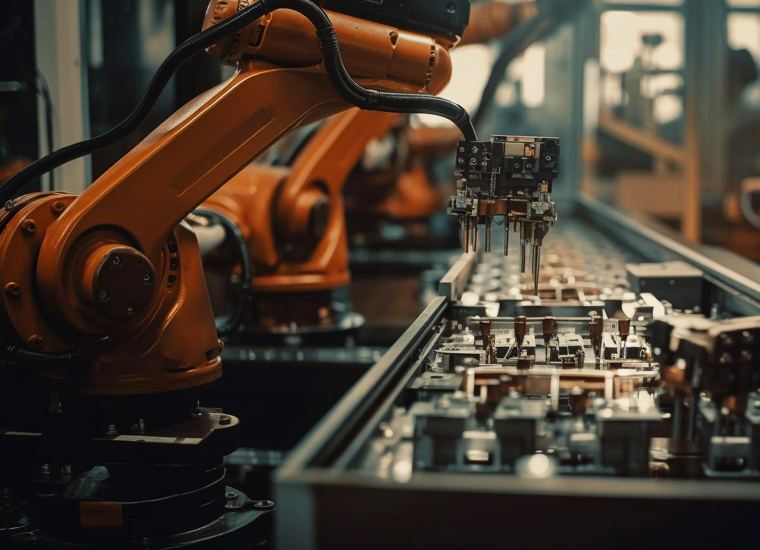
Insights
AGP China Technology Report - Industrial Robotic Arms
The industrial robotic arms sector in China has rapidly evolved to become a cornerstone of the nation's industrial strategy, reflecting significant technological advancement and robust policy support. As China continues to modernize its manufacturing capabilities, industrial robotic arms are integral to enhancing productivity and achieving technological self-reliance.
The sector's growth is driven by technological innovation, strategic product differentiation, and a comprehensive ecosystem supported by government initiatives such as "Made in China 2025." This effort has enabled Chinese manufacturers to meet domestic demand and emerge as global competitors. With a focus on multi-axis motion control, intelligent manufacturing, and automation solutions, companies like iNexBot and GOOGOLTECH are leading the charge in advancing industrial robotics.
Despite these successes, challenges remain. Key areas such as intellectual property development, precision components, and advanced software a
Learn more

Insights
AGP China Technology Report - Disaster Response & Search and Rescue Robots
The advancement of disaster response and search and rescue (SAR) robotics represents a transformative shift in emergency management strategies worldwide. As the frequency and complexity of natural disasters escalate, the integration of sophisticated robotic technologies into response efforts has become indispensable. This evolution underscores the critical role that SAR robotics play in enhancing both national and international emergency preparedness.
Technological breakthroughs, particularly in artificial intelligence (AI), autonomous navigation, and sensor integration, have significantly augmented the capabilities of SAR robots. These advancements allow robots to efficiently navigate treacherous terrains, assess hazardous environments, and locate survivors with high precision. Moreover, the development of specialized drones, such as the SplashDrone 4, which features advanced thermal imaging and rapid deployment capabilities, exemplifies how innovative technologies are enhancing situ
Learn more

Insights
AGP China Technology Report - Agricultural Robots
The agricultural robotics industry is on the cusp of a transformative era, driven by technological advancements and strategic investments. This sector is crucial for addressing global challenges such as food security, labor shortages, and sustainable agriculture practices. The anticipated growth of the global agricultural robotics market, projected to reach USD 40.1 billion by 2028, underscores its strategic importance.
China is at the forefront of this revolution, leveraging its robust innovation ecosystem to become a key player in agricultural robotics. The integration of AI and IoT into agricultural practices has enhanced efficiency and productivity, setting China apart as a leader in this field. The Chinese market itself is expected to grow significantly, with revenues forecasted to reach USD 4,551.0 million by 2030.
Despite these advancements, the industry faces several challenges, including high initial costs and the need for skilled personnel to manage and maintain robotic tec
Learn more

Insights
AGP China Technology Report - Robotics in Surgery & Healthcare
The advancements in robotics within surgery and healthcare signify a pivotal transformation in the medical landscape, enhancing surgical precision and patient outcomes while optimizing procedural efficiency. This technological progression is in alignment with global healthcare priorities, which emphasize the enhancement of surgical techniques and the adoption of minimally invasive procedures.
The integration of cutting-edge technologies such as artificial intelligence (AI), machine learning, and sophisticated imaging systems has been instrumental in the rapid evolution of surgical robotics. These innovations have significantly expanded the utility of robotic systems across diverse medical fields, including orthopedics, cardiology, and neurosurgery, thereby broadening the scope and impact of robotic-assisted procedures. The market's potential is underscored by projections indicating robust growth, driven by continuous technological advancements and increasing demand for precision in me
Learn more

Insights
AGP China Technology Report - Construction Robots
The construction robotics sector is at the forefront of technological innovation, promising to redefine the construction industry globally. The industry's expansion is driven by the imperative need to enhance efficiency, safety, and productivity across construction operations. The market, valued at USD 1.15 billion in 2023, is projected to grow significantly, underscoring the strategic importance of construction robots in addressing labor shortages and improving project outcomes.
Technological advancements in artificial intelligence (AI) and robotics have been pivotal in the rapid adoption of construction robots. These innovations have enabled robots to handle complex tasks such as bricklaying, material handling, and demolition with unparalleled precision and speed. The integration of these technologies addresses critical industry challenges, including labor shortages and safety concerns, thereby improving overall efficiency and reducing costs.
Despite the promising outlook, the cons
Learn more

Insights
AGP China Technology Report - Robotic Manipulation (Arms, Grippers, End Effectors)
Robotic manipulation technologies, which comprise arms, grippers, and end effectors, are pivotal in transforming global manufacturing and logistics industries. China's strategic investments in this field have significantly boosted its capabilities, aligning with its national objective to advance in high-tech manufacturing. By integrating cutting- edge materials, AI, and modular designs, Chinese companies have developed adaptable and economical robotic solutions, strengthening their position in the global market.
Technological advancements in robotic manipulation have led to innovations in gripper flexibility, sensor integration, and the rise of collaborative robots (cobots). These advancements enable precise handling of a diverse range of objects, catering to the complex requirements of contemporary manufacturing and distribution sectors. Despite these achievements, challenges such as the need for standardized safety protocols, protection of intellectual property, and overcoming expor
Learn more

Insights
AGP China Technology Report - Disaster Response & Search and Rescue Robots
The advancement of disaster response and search and rescue (SAR) robotics represents a transformative shift in emergency management strategies worldwide. As the frequency and complexity of natural disasters escalate, the integration of sophisticated robotic technologies into response efforts has become indispensable. This evolution underscores the critical role that SAR robotics play in enhancing both national and international emergency preparedness.
Technological breakthroughs, particularly in artificial intelligence (AI), autonomous navigation, and sensor integration, have significantly augmented the capabilities of SAR robots. These advancements allow robots to efficiently navigate treacherous terrains, assess hazardous environments, and locate survivors with high precision. Moreover, the development of specialized drones, such as the SplashDrone 4, which features advanced thermal imaging and rapid deployment capabilities, exemplifies how innovative technologies are enhancing situ
Learn more

Insights
AGP China Technology Report - Service Robots
The service robotics industry is central to China's strategy for economic and technological leadership. The sector, projected to reach significant market growth by 2026, is increasingly integrated into healthcare, logistics, and consumer services, underscoring its role in national innovation agendas. Leveraging advances in AI and manufacturing, Chinese firms have rapidly developed competitive, cost-effective robots, enhancing their global market presence.
Recent technological progress has been driven by substantial government support and strategic industry initiatives. Chinese companies like Pudu Robotics and KEENON Robotics exemplify this growth, expanding both domestically and internationally. This progress is facilitated by integrated AI technologies, enabling service robots to operate effectively across various environments.
However, challenges such as foreign component dependency and the establishment of safety standards remain. Addressing these issues is crucial for sustained g
Learn more

Insights
AGP China Technology Report - Thermal Management Equipment
The thermal management equipment sector within the data center industry has emerged as a vital component in addressing the escalating demands of modern computing environments. As data centers increasingly serve high- density computing needs, the deployment of advanced cooling technologies becomes imperative to maintain efficiency and sustainability.
Recent technological advancements have positioned liquid cooling and AI-driven optimization as leading solutions, enhancing cooling efficiency and reducing energy consumption. These innovations allow for greater computational power within smaller footprints, aligning with industry goals for sustainability. The integration of modular cooling systems and renewable energy sources further underscores the industry's commitment to environmental responsibility.
Challenges remain, notably in the areas of high initial costs and regulatory compliance. Addressing these issues requires investments in innovation, strategic collaborations, and adherenc
Learn more

Insights
AGP China Technology Report - Graphics Processing Unit (GPU)
The integration of Graphics Processing Units (GPUs) into data centers has become a pivotal force in the evolution of computational infrastructure, driven by the escalating demands of artificial intelligence (AI), machine learning (ML), and big data analytics. This transformation underscores the strategic importance of GPUs in enhancing processing capabilities and operational efficiency within data centers.
Technological advancements have propelled GPUs to the forefront of data center architectures. Their parallel processing capabilities have proven indispensable for AI and ML workloads, enabling rapid data analysis and complex computations. The market reflects this trend, with projections indicating growth from USD 14.3 billion in 2023 to USD 63.0 billion by 2028, at a compound annual growth rate (CAGR) of 34.6%.
Product differentiation among GPU manufacturers has intensified, with companies like NVIDIA, AMD, and Intel developing specialized hardware to cater to diverse computational
Learn more

Insights
AGP China Technology Report - Electrical (Power) Chain
China's rapid advancements in electrical power chain technology have positioned it as a key player in the global data center industry. The country's focus on integrating cutting-edge power solutions, such as efficient electrical distribution and renewable energy systems, has enabled the development of sustainable and cost-effective data center operations. These advancements are supported by strategic government policies that promote innovation and infrastructure growth, effectively enhancing China's competitive edge on the global stage.
Despite these successes, challenges remain. The need for continuous innovation in power distribution and management systems is critical to sustaining growth and meeting the increasing energy demands of emerging technologies like AI and IoT. Moreover, as China continues to expand its influence, international data center operators face heightened competition but also opportunities for collaboration in technology development and sustainable practices.
Gl
Learn more

Insights
AGP China Technology Report - Collaborative Robotics (Cobots)
The landscape of collaborative robotics (cobots) is rapidly evolving, with China positioned at the forefront of this transformation. Driven by strategic initiatives such as "Made in China 2025," cobots are integral to modernizing China's manufacturing capabilities and addressing labor shortages through advanced automation solutions. These efforts highlight the nation's commitment to becoming a leader in the global robotics industry.
Technological advancements have been crucial in accelerating the adoption of cobots. Innovations in artificial intelligence, machine learning, and sensor technologies have significantly enhanced cobots' functionality, enabling seamless interaction with human workers and adaptability across various industrial environments. This progress has facilitated significant product differentiation, allowing manufacturers to customize cobot applications to meet specific industry demands, thereby enhancing their utility and market appeal.
The development of a comprehe
Learn more

Insights
AGP China Technology Report - Speech & Natural Language Processing
The integration of Speech and Natural Language Processing (NLP) technologies in the robotics industry signifies a pivotal shift, enhancing capabilities in human-robot interaction, efficiency, and operational intelligence. This advancement is aligned with China's strategic innovation agenda, establishing the nation as a key player in the global robotics sector.
The incorporation of NLP technologies has empowered robots to engage in more intuitive and effective communication with humans, thereby transforming sectors ranging from industrial automation to consumer electronics. China's rapid progress in this domain reflects a robust ecosystem characterized by innovation, strategic partnerships, and competitive differentiation. These elements have enabled Chinese firms to challenge established market leaders and expand their influence globally.
However, the journey is not without challenges. Bridging core intellectual property gaps, overcoming export restrictions, and establishing comprehe
Learn more

Insights
AGP China Technology Report - Robotic Simulation & Digital Twins
The integration of robotic simulation and digital twin technologies marks a pivotal transformation in the robotics industry, significantly enhancing design, deployment, and operational efficiencies. These technologies allow for the creation of precise virtual models that enable comprehensive testing and optimization before physical implementation, thereby reducing development time and costs while improving reliability and performance across sectors.
The market for robotic simulation software is projected to grow from USD 584 million in 2023 to USD 1.39 billion by 2030, driven by the increased adoption of simulation tools for robotic operational planning. Digital twin technologies are poised to achieve a market value of USD 918.1 billion by 2032, with a CAGR of 61.8% from 2023 to 2032, underpinned by advancements in IoT, AI, and machine learning.
Despite these promising trends, challenges such as implementation complexity and cost pose barriers, especially for startups and smaller ent
Learn more

Insights
AGP China Technology Report - Edge Computing & Onboard Processing
The integration of edge computing and onboard processing technologies in the robotics industry represents a pivotal advancement, offering significant enhancements in real-time data processing and autonomy. By allowing robots to process data locally, these technologies reduce latency and dependency on cloud systems, enabling more immediate decision-making and efficient operations. This capability is especially crucial in high-stakes environments such as autonomous vehicles and industrial automation.
Advancements in edge computing have facilitated the development of robust processors capable of executing complex AI algorithms directly on robotic platforms. This innovation supports product differentiation by enabling manufacturers to produce robots with superior performance, adaptability, and energy efficiency. Establishing a supportive ecosystem that includes hardware providers, software developers, and integrators has further propelled the adoption of these technologies. Strategic alli
Learn more

Insights
AGP China Technology Report - Humanoid Robots
China's strategic focus on humanoid robotics underscores its ambition to lead in the realm of advanced AI and manufacturing. The nation's rapid progress is facilitated by a robust policy framework, substantial investments, and a thriving ecosystem of innovation and collaboration. The integration of cutting-edge AI with mechanical engineering has propelled China to the forefront of the global humanoid robotics industry, setting ambitious targets for mass production and self-sufficient supply chains.
Technological advancements have been notable, with breakthroughs in actuator precision, AI-driven motion planning, and real-time environmental adaptation. These innovations are supported by a comprehensive industrial system and a strong manufacturing base, allowing China to localize production and bolster supply chain resilience. The strategic vision for humanoid robotics aligns with broader initiatives such as Made in China 2025, which aims to reduce reliance on foreign technology.
Despit
Learn more

Insights
AGP China Technology Report - Mechatronics & Embedded Systems
The convergence of mechatronics and embedded systems has revolutionized China's robotics industry, establishing it as a pivotal element within the nation's innovation agenda. This technological symbiosis has transformed traditional approaches, enabling the development of advanced robotic systems that are essential for intelligent automation and manufacturing.
Significant technological achievements in mechatronics have facilitated the creation of robots with superior precision, flexibility, and efficiency. By integrating mechanical, electrical, and computational engineering disciplines, Chinese companies have developed systems capable of performing complex tasks across various sectors. Embedded systems enhance these capabilities by providing real-time processing and control, crucial for autonomous operations and decision-making. This fusion supports China's strategic aim to lead in global robotics innovation and production.
The robust industrial ecosystem in China, bolstered by collab
Learn more

Insights
AGP China Technology Report - Artificial Intelligence (AI) & Machine Learning for Robots
The integration of Artificial Intelligence (AI) and Machine Learning (ML) into the robotics sector represents a significant leap forward, marking a new era of innovation and competition. China's strategic focus on these technologies has positioned it as a pivotal player in the global robotics landscape, influencing the dynamics across various industries.
AI and ML technologies have enhanced the capabilities of robots, enabling them to perform increasingly complex tasks with autonomy and precision. This progress is evident in the diverse applications of robotics, from industrial automation to service and medical sectors. Chinese companies, supported by government initiatives like "Made in China 2025," have accelerated the development of AI-enhanced robots, leveraging cost-effective production and rapid technological advancements.
Despite these advancements, challenges such as intellectual property gaps, regulatory hurdles, and safety standards persist. Addressing these issues is cruci
Learn more

Insights
AGP China Technology Report - Autonomous Navigation & Path Planning
The transformative potential of autonomous navigation and path planning technologies within the robotics industry is profound, marking a new era of innovation and efficiency. These technologies facilitate robots' ability to operate independently, enhancing their utility in complex and dynamic environments. As such, autonomous navigation has become a cornerstone of strategic importance for nations aiming to lead in the robotics sector.
Technological advancements, such as the integration of advanced AI and sensor technologies, have significantly improved the precision and reliability of autonomous navigation systems. These developments are enabling robots to make real-time decisions with greater accuracy and adaptability. The rapid evolution of these technologies is supported by strong innovation ecosystems and strategic government initiatives, such as the "Made in China 2025" plan, which bolsters China's position as a formidable player on the global stage.
Despite these advancements,
Learn more

Insights
AGP China Technology Report - Exoskeletons & Wearable Robotics
The exoskeletons and wearable robotics industry in China is at the forefront of the nation's technological innovation strategy, demonstrating significant advancements that align with its broader national goals. This sector's growth underscores China's commitment to enhancing its technological prowess and addressing critical societal challenges, such as healthcare and industrial efficiency.
China's rapid progress in this field is driven by significant technological innovations, product differentiation, and a well-developed ecosystem that supports collaboration between government, industry, and academia. Technological innovations in sensor technology, artificial intelligence, and materials science have been pivotal in developing more sophisticated and efficient exoskeletons. These advancements have broadened the application of exoskeletons across various industries, including healthcare, manufacturing, and defense, thereby enhancing China's competitive position globally.
Product differ
Learn more

Insights
AGP China Technology Report - Autonomous Inspection Robots
Autonomous inspection robots have become pivotal in redefining industrial inspection processes worldwide. This technology leverages sophisticated AI, high-precision sensors, and robust data analytics to provide unparalleled efficiency and accuracy in environments that are often hazardous or challenging for human workers.
The strategic significance of these robots is apparent as industries increasingly prioritize safety, cost efficiency, and precision. In sectors such as oil and gas, manufacturing, and utilities, autonomous inspection robots offer critical advantages:
• Technological Advancement: These robots utilize advanced AI algorithms and machine learning for real- time data analysis and decision-making, enhancing their ability to navigate complex environments autonomously. This results in improved inspection accuracy and operational efficiency.
• Product Differentiation: The focus on modular design and the integration of state-of-the-art sensors like LiDAR and thermal imaging e
Learn more

Insights
AGP China Technology Report - Automated Guided Vehicles (AGVs)
Automated Guided Vehicles (AGVs) represent a cornerstone of China’s ambition to lead in automation and smart manufacturing. The strategic deployment of AGVs aligns seamlessly with national policies designed to enhance industrial productivity and global competitiveness. These efforts have not only solidified China’s position as a leader in the AGV market but have also catalyzed significant technological advancements and market expansion.
China's rapid progress in AGV technology is attributed to its robust ecosystem that supports innovation, cost- effective manufacturing, and rapid adaptation to market demands. The AGV industry has witnessed significant technological breakthroughs, notably in areas such as load handling capabilities and autonomous navigation systems. Chinese manufacturers have leveraged these advancements to penetrate international markets, offering competitive pricing and adaptable solutions that challenge established global players.
Despite these achievements, the in
Learn more

Insights
AGP China Technology Report - Actuation & Motion Control
The evolution of actuation and motion control technologies represents a pivotal shift in the industrial landscape, influencing sectors such as robotics, automotive, and manufacturing. These technologies are integral to enhancing precision, efficiency, and adaptability, thus driving significant advancements in automation.
The integration of Artificial Intelligence (AI) and the Internet of Things (IoT) has played a transformative role in motion control systems. AI-driven solutions enable predictive maintenance and adaptive control, optimizing efficiency and minimizing downtime. Concurrently, Industrial IoT facilitates real-time monitoring and control, further enhancing operational effectiveness. This technological synergy underscores the strategic importance of continued innovation in actuation and motion control technologies.
Despite the promising advancements, challenges persist, including high initial investments and the complexity of integrating these systems into existing infrastr
Learn more

Insights
AGP China Technology Report - Hospitality & Food Service Robots
The deployment of robotics within the hospitality and food service sectors is redefining industry standards and operational paradigms. As robotics technology advances, businesses are increasingly leveraging automated systems to enhance efficiency, consistency, and customer satisfaction. These innovations represent a significant shift towards a more automated future, where robots play a crucial role in service delivery and operational management.
Technological advancements have enabled the development of robots with sophisticated capabilities, including autonomous navigation, voice interaction, and real-time data processing. These features not only streamline operations but also offer enhanced customer experiences, setting new benchmarks for service excellence. The integration of such technologies positions businesses at the forefront of innovation, allowing them to cater to evolving consumer preferences and maintain competitive advantage.
Despite these promising developments, challen
Learn more

Insights
China’s SaaS AI Playbook: Lessons for Multinational Innovators
As the world races to harness artificial intelligence, China is reshaping the terms of engagement. Nowhere is this more evident than in the country’s fast-growing enterprise AI sector, where a new breed of SaaS innovators is doing what global players often struggle to achieve: delivering useful AI at scale, at speed, and at a cost that outpaces traditional models. For multinational executives overseeing global R&D, innovation strategy, or digital transformation, the question is what can be learned from China’s model, and how quickly those lessons can be applied beyond its borders.
Learn more

Insights
China’s Manufacturing Startups: Rewriting Rules on Speed & Cost
As Western manufacturers navigate a convergence of pressures—from margin compression and demographic labor shifts to intensifying global competition—a new wave of Chinese AI-manufacturing startups is gaining ground with remarkable agility. These firms are not merely building robots or retrofitting factories; they are redefining how intelligent automation is conceived, built, and scaled.
Learn more

Insights
Parallel Innovation: China’s Edge in Biopharma
Over the past decade, China has rapidly emerged as a powerhouse in pharmaceutical innovation. Behind this transformation lies a distinct operational strategy: parallel processing across the drug development lifecycle. Unlike the traditional linear model followed by most multinational companies, Chinese biopharma firms have institutionalized an approach that accelerates time-to-market by running clinical trials, regulatory submissions, manufacturing scale-up, and digital integration concurrently rather than sequentially. This Insight explores how Chinese pharmaceutical companies are running processes in parallel, what makes this system unique compared to global norms, and what multinational firms can learn from the China model.
Learn more

Insights
Boosting Pharma Innovation Capacity in China
Multinational pharmaceutical companies are increasingly investing in China to build internal innovation capacity and / or forging external partnerships with Chinese pharma, driven by the country's robust biotech ecosystem, supportive government policies, and advancements in AI and data science.
Learn more

Insights
Digital Silk Road: AI Exports Reshaping Global Tech Power
In the rapidly evolving landscape of global technology and geopolitics, China’s Digital Silk Road (DSR) has emerged as a pivotal extension of its Belt and Road Initiative (BRI), launched in 2015.
This initiative, initially focused on physical infrastructure, has shifted toward digital connectivity, with artificial intelligence (AI) at its core. By 2025, the DSR’s role in exporting AI technologies has become a critical lens for understanding China’s ambition to challenge the technological dominance of the U.S. and the EU while fostering economic and political ties with developing nations.
Learn more
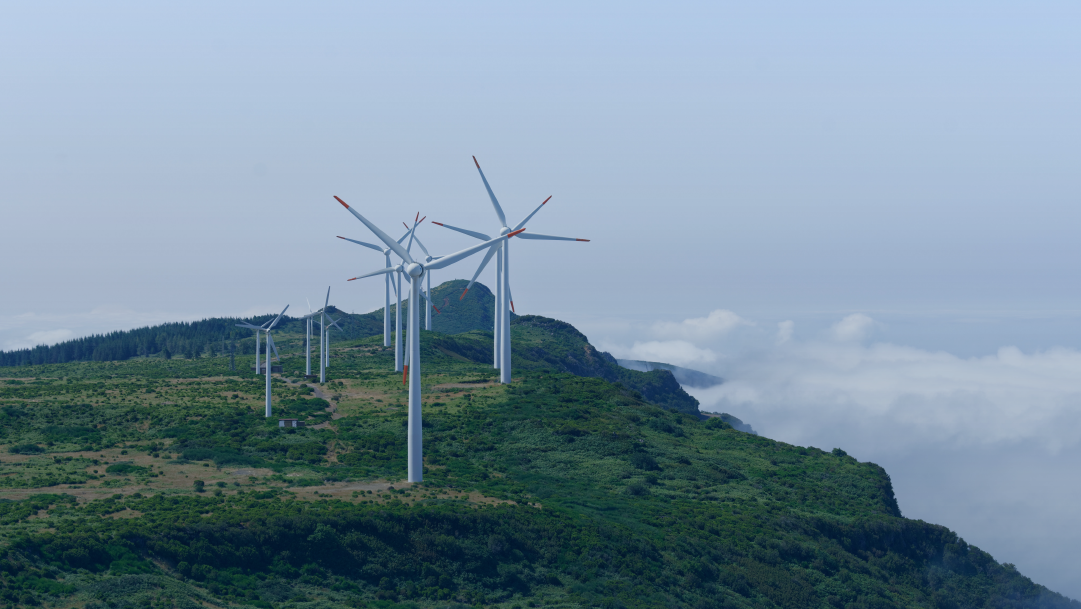
Insights
China's Green Shift: Implications for MNCs Innovation Strategies
In March 2025, the National Development and Reform Commission (NDRC) announced plans for substantial investments in new offshore wind farms and expansive clean energy hubs integrating both solar and wind technologies. China's rapid shift toward sustainability and green innovation is transforming its economy and redefining global business strategies. China's commitment to sustainability and green innovation provides an expansive landscape for MNCs to innovate, compete, and grow.
Learn more

Insights
China’s AI Leap: Talent, Innovation and Global Tech Impact
In early 2025, an unknown Chinese startup named DeepSeek launched DeepSeek-R1, an open-source large language model (LLM) that made global headlines. The model not only rivaled established LLMs such as GPT-4, Llama 3.1, and Claude in performance but achieved this at significantly lower costs and with reduced training data requirements. DeepSeek's achievement wasn't an isolated event. Rather, it reflected years of groundwork that has shaped China's AI ecosystem—carefully fostered through academic research, talent cultivation, innovation under constraints, and fierce internal competition. How is China orchestrating this transformation, and what does it mean for global businesses and investors?
Learn more

Insights
Asia’s Chip Race: Reshaping the Global Semiconductor Ecosystem
The semiconductor industry is at an inflection point, with global dynamics shifting as nations race to secure technological sovereignty and leadership in AI-driven computing. This transformation is being driven by a mix of necessity, strategic investment, and geopolitical pressure. Countries such as China, South Korea, Malaysia, or Singapore are taking significant steps to build domestic semiconductor capabilities, not only to mitigate reliance on third-party technologies but also to position themselves as key players in the future of AI computing.
Learn more

Insights
The Global Expansion of Chinese Multinational Corporations
From electric vehicles to artificial intelligence, China’s multinational corporations (MNCs), are expanding rapidly, backed by government initiatives, financial muscle, and cutting-edge technology.
Yet, this international push comes with challenges. Stricter regulations in Europe and North America, brand trust issues, and geopolitical headwinds are testing the resilience of these firms. Can Chinese companies adapt, localize, and thrive in foreign markets, or will they struggle to replicate their domestic success abroad?
This Insight piece explores why Chinese companies are going global, where they are investing, how they are funding their expansion, and the critical obstacles they must overcome.
Learn more
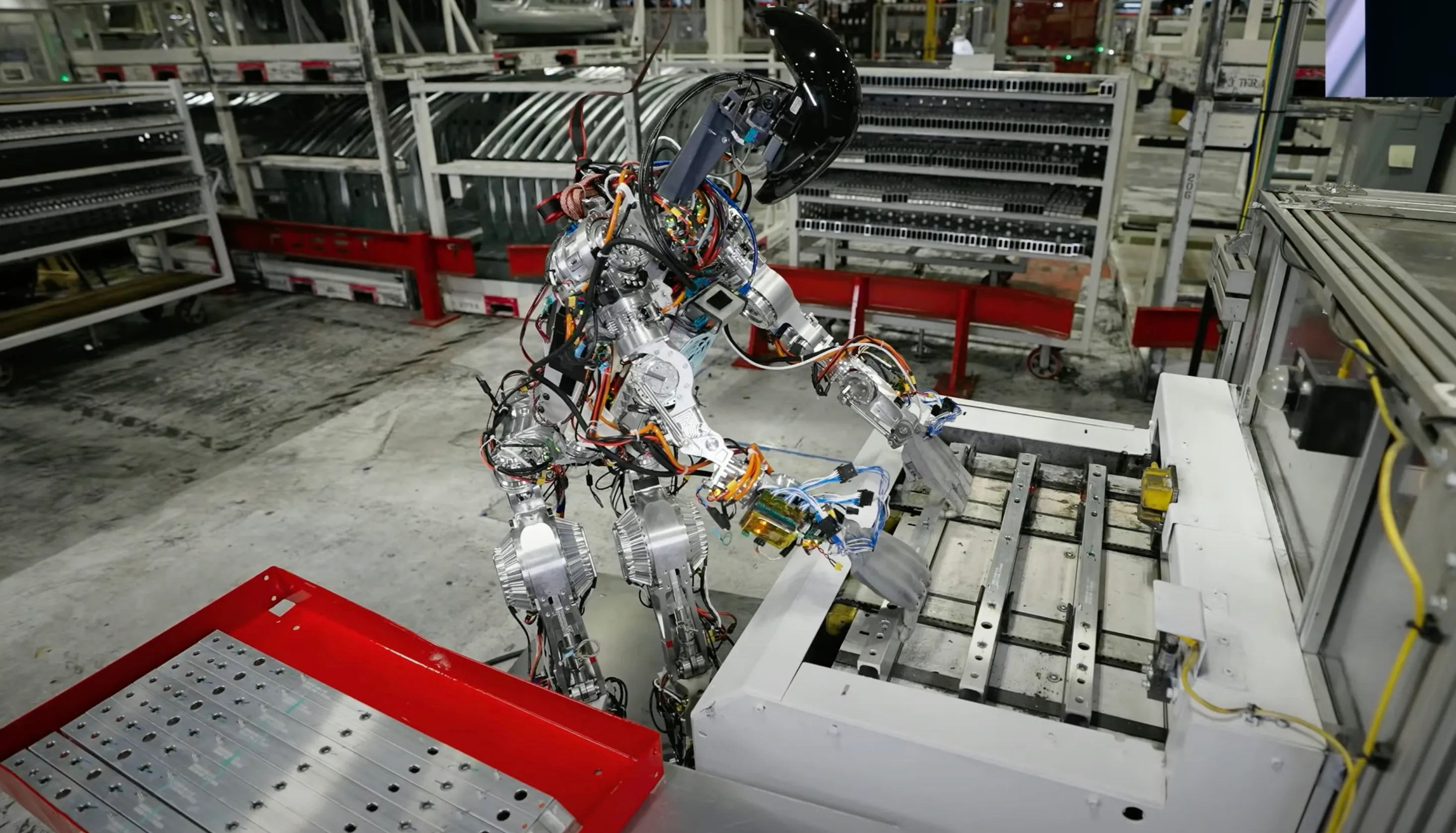
Insights
Humanoid Robots in 2025: Powering the Next Industrial Evolution
In the domain of technology, few fields have captured the imagination and potential for transformation quite like humanoid robotics. In this Insight piece, we explore advancements, applications, projected market size, and some of the key players shaping the future of humanoid robots, with a special focus on developments in China.
Learn more

Insights
Vietnam’s Vision: Building the World’s First AI-Powered City
Vietnam is making ambitious moves to position itself as a leader in artificial intelligence (AI) by transforming Ho Chi Minh City into the world’s first AI-powered city by 2030. This initiative, unveiled at the World Economic Forum (WEF) in Davos earlier in 2025, is more than just a technological endeavor—it represents a strategic vision to redefine urban development, foster economic growth, and place Vietnam at the forefront of global innovation.
Learn more

Insights
APAC: Leveraging AI at Scale to Drive Value
The Asia Pacific (APAC) region is witnessing a shift from experimental AI projects to strategic deployments aimed at maximizing business impact.
This strategic pivot is driven by the understanding that AI's true value lies in its ability to enhance customer experience, automate back-office processes, and streamline sales and customer lifecycle management, as outlined in the "APAC AI Outlook 2025" report, a joint initiative by Ecosystm and IBM.
Learn more

Insights
2025: SEA Startups Refocus on Profitability Amid Investor Caution
Southeast Asia’s startup ecosystem is undergoing a significant transformation. After years of growth fueled by ample venture capital, global economic pressures are reshaping priorities. Inflation, higher interest rates, and increased investor scrutiny are compelling startups to emphasize sustainable business models over rapid expansion.
Learn more

Insights
Southeast Asia’s AI Boom: Progress, Pitfalls, and the Road Ahead
Southeast Asia (SEA) is positioning itself as a leading hub for artificial intelligence (AI) and digital innovation. With projections indicating a sixfold growth in its AI market to $30.3 billion by 2030. This Insight delves into the trends shaping AI in SEA, the economic and social impact, and the hurdles that must be overcome to ensure a sustainable future for AI in the region.
Learn more

Insights
Deepfakes in Asia: A Threat CEOs Cannot Ignore
The rise of deepfakes - AI-generated synthetic media - has become a defining challenge for businesses across Asia. The rapid proliferation of this technology introduces a host of risks, ranging from financial fraud to reputational crises. This Insight delves into the current state of deepfakes in Asia to help businesses navigate this evolving landscape.
Learn more

Insights
ASEAN’s Digital Crossroads: Innovation, Security, and Sustainability in 2025
ASEAN is undergoing a transformative digital shift. The rapid adoption of artificial intelligence (AI), growing emphasis on cybersecurity, and alignment with sustainability goals are reshaping the region's economic and social landscapes. However, these changes also present significant challenges such as data quality issues, infrastructure gaps, and a persistent digital divide.
This Insight explores the 2025 key trends defining ASEAN’s digital future, the obstacles to overcome, and the opportunities that lie ahead for creating an inclusive, secure, and innovative ecosystem.
Learn more

Insights
A Blueprint for AI Success: From Ideation to Assessment
Insights and recommendations — the same ones we explore in our client workshops — to help organizations generate AI use cases and ideas effectively. Many assume this requires deep technical knowledge. It doesn't. In fact, innovation often begins with simple, fundamental questions that anyone can ask.
Learn more

Insights
Innovating in China. 2024 Strategic Landscape for Multinationals
Based on findings from the 2024 Innovating in China benchmarking study by the Asia Growth Exchange initiative, this Insight piece addresses key questions related to innovation investment, structuring, and technology adoption in China, emphasizing why the country is crucial for forward-thinking multinationals.
Learn more

Insights
A Guide to On-Demand Workforce Collaboration
This Insight piece summarizes key insights from our most recent publication—AGP: Your Guide to Collaborating with On-Demand Talent. The guide explores how organizations can attract, engage, and maximize the value of independent talent, providing a roadmap for success in today’s evolving labor market.
Learn more
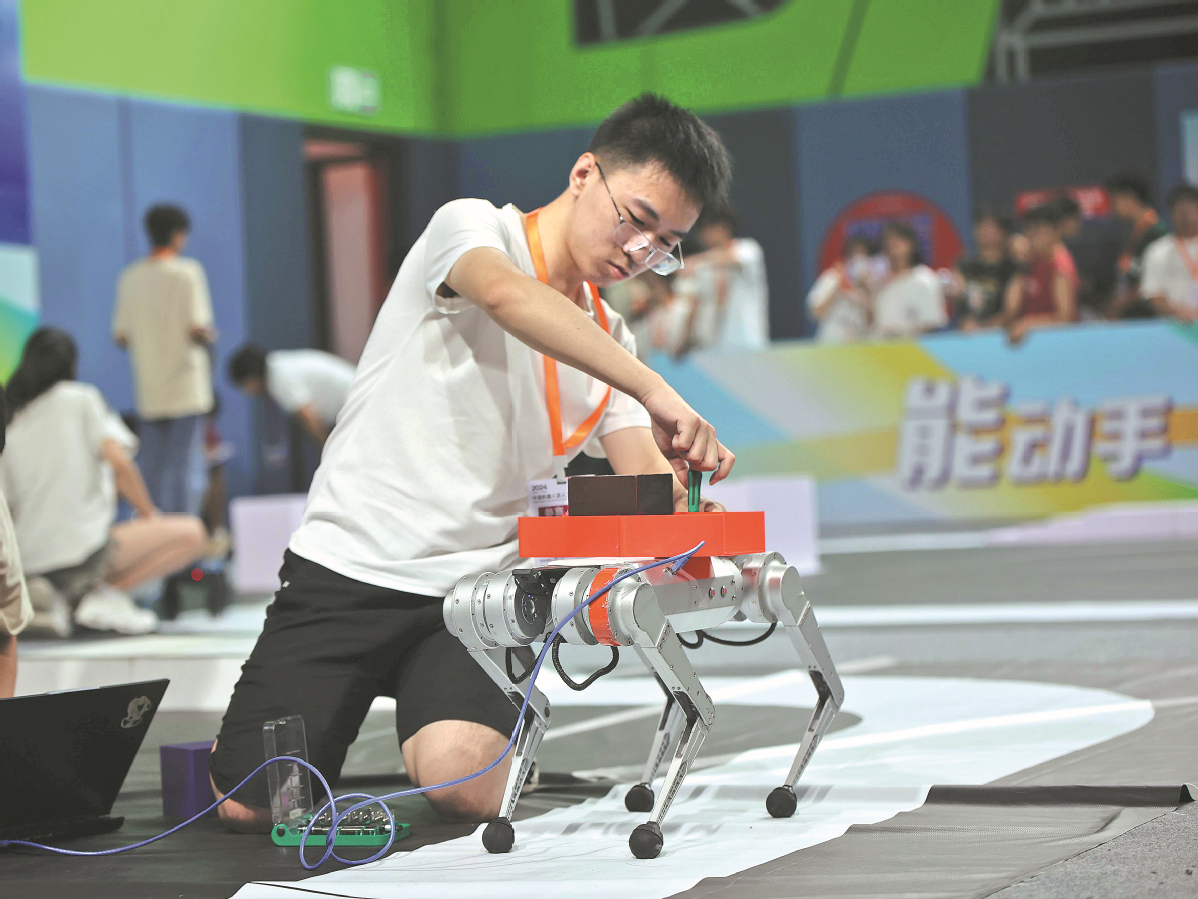
Insights
China's Talent Paradox in a Shifting Workforce Landscape
China is facing a demographic decline that raises significant questions about the future of its workforce. Paradoxically, however, urban employment is expected to not only persist but grow through 2045, largely fueled by rural-to-urban migration.
Learn more

Insights
China’s Unique Path to Leadership in Advanced Technologies
Over the past fifteen years, China has ramped up its spending on research and development (R&D). In 2024, China’s growth in technology research is reshaping the global innovation landscape, claiming leadership in 57 out of 64 advanced technologies.
Learn more

Insights
Unlocking GenAI in China: A Strategic Roadmap for Executives
Localizing AI for China presents a unique blend of challenges and opportunities. It requires more than a simple replication of existing models; a tailored approach that aligns with China’s specific regulatory and market dynamics. This Insight offers a strategic roadmap to effectively harness AI’s full potential in China.
Learn more

Insights
The Dragon's Roar: China's AI Titans Shape a New Era
In the relentless race toward AI supremacy, China emerges as the second-largest AI economy globally. With many AI powerhouses, China is set to shape the future of LLMs. Get to know China's AI and LLM landscape below and learn how China's tech conglomerates are already adopting LLM to provide new and enhanced services.
Learn more

Insights
Addressing Mental Health for China's 180 Million Seniors: A Trillion-dollar Market
China's elderly mental health market is gaining attention due to its societal and commercial significance, with 180 million seniors affected. Companies are utilizing innovative approaches to address this issue, offering digital therapies, AI companions, and comprehensive care models. This emerging sector aims to bridge the gap between psychological services and elderly care.
Learn more

Insights
Beijing Prohibits Use of AI-Generated Prescriptions: How Far Away Are AI Doctors?
Beijing's strict ban on AI-generated prescriptions has raised questions about the future of AI doctors. The Beijing Municipal Health Commission introduced measures prohibiting AI-based prescription generation and the provision of medication prior to prescription, while companies explore AI applications and solutions to challenges in accuracy and medical imaging integration.
Learn more
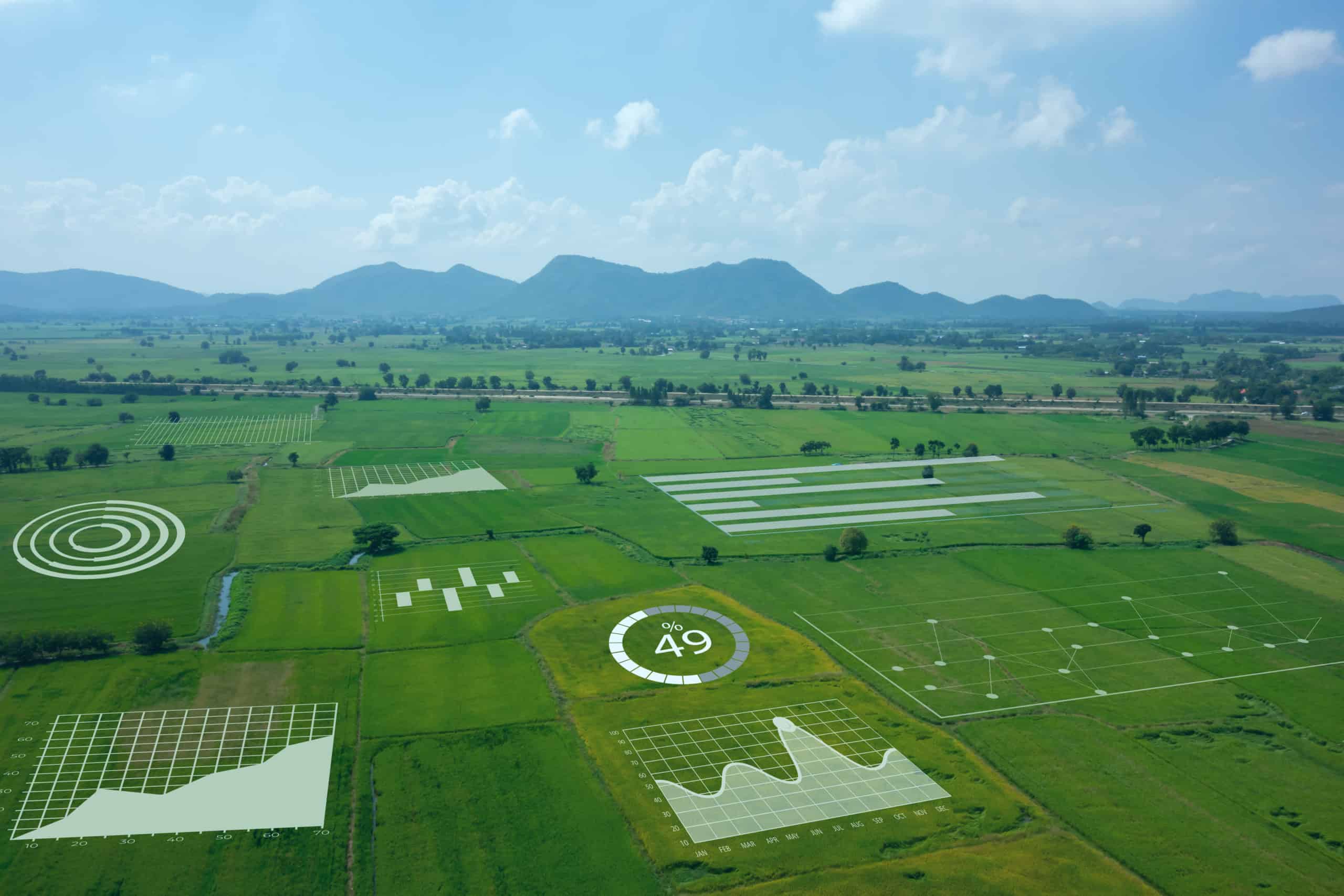
Insights
China Boosts 5G Development by Accelerating Penetration into Rural Areas
China Telecom becomes the last major Chinese operator to gain approval to repurpose 800MHz spectrum for 5G, accelerating rural network expansion. MIIT's moves ensure robust 5G connectivity and coverage, aiding rural access and reducing 2G/3G shutdown concerns.
Learn more

Insights
The New Era of Digital Twin Innovation in China
China's digital twin market is surging due to policy support and intense competitive pressure to improve operational efficiencies. We explore the role of role collaboration, open-source innovation, and investment inbuilding a digital twin ecosystem, promoting its integration with the physical world, and driving industry transformation in the digital era.
Learn more

Insights
Innovating in Asia Study 2023
How can you optimize your innovation strategy in Asia? In this study, we analyze quantitative and qualitative input from over 90 innovation leaders from European and American companies to discover the latest innovation trends and define best practices.
Learn more

Insights
The Future of Connectivity: Industrial 5G
In today's fast-paced world, high-speed connections have become vital for companies across industries. With the level of automation rising, the need for reliable and efficient data monitoring structures has never been more critical. Enter 5G, the fifth-generation wireless technology, which has captured the spotlight in machine-type communication and the Internet of Things (IoT).
Delve into the transformative potential of private 5G networks in China's industrial sector below, exploring its market outlook, opportunities, and challenges, as well as implications for the automation space to evaluate how 5G could impact your business.
Learn more

Insights
Revolutionary Technologies: Adoption & Impact of Generative AI in China
As organizations recognize the advantages of these technologies, we anticipate rapid adoption. Regardless of the outcome of the LLM race, China is already harnessing the power of GPT and LLMs to drive innovation and reshape industries.
Find out below how generative AI is changing the Chinese market and what potential use cases can do for your company.
Learn more

Insights
Semiconductor Dynamics: Reshaping Global Markets
The $50 billion CHIPS Act aims to strengthen the domestic semiconductor industry through investments, research programs, and the establishment of advanced manufacturing capacity. Yet it does so by expressly barring companies that receive money by conducting advanced semiconductor operations in China.
Explore how US policies and global tensions are reshaping the semiconductor market and impacting business decisions for companies across many sectors.
Learn more

Insights
Breaking Down Silos: Aligning Stakeholders to Achieve Real Innovation Results
Innovation is the lifeblood of any business, but getting everyone on the same page can feel like herding cats. The more people involved, the harder it gets to make decisions and move forward. Accelerate time-to-market by ensuring stakeholder buy-in and support for new initiatives.
Learn more

Insights
Ruhlamat's Journey to Industry 4.0: Lessons in Digital Transformation
As the manufacturing sector moves towards Industry 4.0, digital transformation is becoming essential for businesses to stay competitive. But how can traditional machine builders and automation companies navigate this new era? Ruhlamat's journey provides answers. In this article we dive into their journey and highlight the key factors that enable them to consistently outgrow the market.
Learn more

Insights
China's Generative AI Dilemma: Innovation vs. Control
The advancement of generative AI has created a frenzy among Chinese businesses as they explore its potential impact on internal operations and customer interactions. Real innovation is happening beneath the surface, with thousands of developers exploring ways to leverage GPT for process restructuring and new customer experiences. Find out what's happening in China and assess how your company can leverage GPT.
Learn more

Insights
Asia Growth Exchange #8: Balancing Regional Operations
For corporates, realizing growth in Asia means striking a balance between de-risking and increasing investment in high-potential regions. It means globalizing in the right areas while still giving room for localization and flexibility in order to be competitive in core markets. Learn how C-level executives approach strategy management and decision-making across borders to support growth in Asia by downloading anonymized notes of our discussion.
Learn more

Insights
The Machine Builder Digital Revolution: A Roadmap to Evolving for the 21st Century
How can machine builders digitalize? A one-size-fits-all approach to digital transformation is not feasible. The key to success is learning and building capabilities through small steps, with regular review and adjustment. Start small, but act fast. Learn how with this case study highlighting the digitalization journey of a leading PCB equipment manufacturer.
Learn more

Insights
What is the enterprise metaverse?
Office dynamics are being disrupted by remote work and supply chain visibility is more important than ever. The enterprise metaverse is envisioned as an immersive digital environment that replicates and connects every aspect of an organization. It could enable optimized decision making from the C-suite to the front lines, strengthen remote collaboration, provide innovative ways for companies to engage their clients, and enable new product development processes.
Learn more

Insights
SPOTLIGHT PODCAST EP. 160: How to scale IoT globally and affordably
Episode 160 with guest Ivo Rook, President and COO of 1NCE. Themes: growth story | re-imagining the iot supply chain | enabling new business models | leveraging strategic investors
Learn more

Insights
Innovation Insight: Ally with sales to gain access to customer insights
The history of innovation is a littered with failure. Studies regularly find that more than 90% of new products fail to meet expectations. For every Tesla in the market, there are a dozen Zeos, Edsels and LeEcos. Big ideas, smart people, and deep pockets are not enough to realize success. Innovators must gain a deep understanding of their customers. Below, we provide a real-world example on how to do just that.
Learn more

Insights
Digital Portfolio Rightsizing
With the sober economic outlook and global supply chain disruptions continuing to impact business operations and profitability, being focused is more important than ever. Learn how to improve your Return on Digital Investment (RODI) by prioritizing solutions based on actual value creation, and scaling initiatives up or down accordingly.
Learn more

Insights
Trend report: 5G in Asia
Asia is leading global 5G adoption with more by 70% of total devices connected by the end of 2021. Device connections in Asia alone are forecasted to reach 1.8 billion by 2025 according to GSMA. After initial uncertainty regarding the tangible value of 5G networks, use cases are popping up all over Asia, from medicine delivery in Thailand to smart city operations in China.
Learn more

Insights
SPOTLIGHT PODCAST EP. 147: Transform AI development with low-code platforms
Episode 147 with guest Brian Sathianathan, co-founder and CTO of Iterate.ai. Themes: founding story | low-code platforms | AI complexity | edge vs. cloud | blockchain | machine vision use case
Learn more

Insights
The state of B2B sales and marketing
The transition from field to virtual sales involves a high degree of adaptation to the current sales force structure and their work habits:
Power shift, such as changes in account and deal responsibility
Shift in the sale process from physical and phone to virtual and digital and shifts in privileges, such as specific work benefits.
Learn more

Insights
Innovating in Asia Playbook
How can innovation localization drive competitiveness and profitability in Asian markets? This playbook is a guide for companies who seek to grow in Asian markets and integrate Asian talent into their global innovation engine.
Learn more

Insights
Metaverse and XR Archetypes
There has been a lot of hype invested the idea of “the metaverse.” Some of this in genuine excitement about the future of human experience, creativity, and community. And some, of course, is excitement about the potential to make billions in advertising. Meta’s vision of a future in which everyone has a digital wardrobe to swipe through is directly linked to the fact that Meta wants to make money selling virtual clothes.
Learn more

Insights
The future of IoT payments
IoT payments are triggered by devices with a high level of autonomy, based on data that the device collects and analyzes. Their value lies in removing people from the loop in order to enable autonomous systems, improve process efficiency, or provide better customer experiences.
Learn more

Insights
How to grow a tech business in Asia
Asia is home to 60% of the world’s population and has grown into a tech powerhouse in the past decade. With several of the world’s most advanced economies and many promising emerging economies, the continent is increasingly a key growth driver for multinational companies.
Learn more

Insights
How to rightsize your company’s digital portfolio
By 2023, IDC estimates that global spending on digital transformation services and technologies will reach $2.3 trillion.
Although digital transformation of operations and product portfolios has become a standard practice for every organisation in all sectors, many companies struggle to assess the value of their digital products, thus scrap them too early or too late.
Learn more

Insights
AI for manufacturing - Chinese market AI adoption trends
General artificial intelligence is a frontier research discipline to build computerized systems that perform tasks requiring human intelligence. In contrast, Industrial AI is concerned with the application of such technologies to address industrial pain points for customer value creation, productivity improvement, cost reduction, site optimization, predictive analysis and insight discovery.
Learn more

Insights
How to build your digital innovation footprint in Asia
Emerging and developing Asia will contribute 57.4% of global GDP growth in the medium term, generating $10.1 trillion in new annual economic activity by 2025.
China alone will contribute 31.2% of global GDP growth during this five-year period, with China’s GDP growing by $5.5 trillion during this period.
Learn more

Insights
How to extract value from your data
Data might be the new oil but it is a much more complicated commodity. Maximizing the value of your data requires a clear strategic vision that includes both internal use cases and external monetization, while accounting for regulatory, security, and privacy risks.
Learn more

Insights
How to effectively shift your organization to a problem-solving mindset
A detailed mapping of processes to stakeholders, activities, and pain points reveals the operational details behind problems worth solving.
Enterprise challenges are more complex than consumer challenges. For consumers, the pain reporter, buyer, and user are usually the same person. In enterprises they rarely are.
Learn more

Insights
How to enter Chinese markets with IoT solutions
There are four critical business areas to consider when localizing a digital business in China: ‘whole product’ differentiation, revenue model localization, achieving superior distribution, and prioritizing the right customer segments.
Learn more

Insights
How to build a data-enabled business model
The most valuable companies in the world today leverage digital technologies to disrupt conventional business models and create new markets. All IoT business model configurations involve the servitization of data, processes, or products.
Learn more

Insights
Open innovation playbook - Competitive digital innovation strategies in Asia’s most dynamic markets
China is at the forefront of digital innovation yet foreign companies are often unprepared to participate due to a lack of local innovation capabilities. Open innovation strategies provide a solution. The term ‘open innovation’ was coined by Professor Chesbrough of UC Berkeley in 2003 to illustrate how companies incorporate external ideas and expertise to advance their innovation goals.
Learn more

Insights
Three edge computing trends and why you should care
Edge computing involves hardware and software technologies that enable storage, computing, and processing close to the device that generates or consumes data. ‘Close’ is a relative term that could include servers co-located with cell towers, on premise servers, or operational devices.
Learn more

Insights
5 mistakes to avoid for a successful IoT implementation
Every year more and more products are entering the IoT space, and billion of products are connected to the Internet.
If you are considering implementing IoT within your organization, or developing a new connected product, read on to ensure you are not making these five common mistakes.
Learn more

Insights
Tactics to Validate Product-Market Fit
The three most common ways that entrepreneurs can establish product market fit are: Proof of Concept (PoC), Prototype, and Minimum Viable Product (MVP). The purpose of this article is to reduce confusion about which approach to use based on your validation goals and stage of product development. First, let’s define the concepts.
Learn more

Insights
How do successful sales & product teams innovate together?
Most mature companies and highly successful startups organize themselves by function and those functions could turn into silos. Innovation success is facing a common obstacle, which is usually the misalignment between product and customer-facing teams.
Learn more

Insights
Edge computing and industrial automation
Edge computing is moving the point of compute from cloud based remote servers or on-premise servers, to the edge of the network, into the physical world. Data analysis and storage take place on-site, near the asset, without necessarily sending data to the cloud.
Edge computing can be done at multiple points along the edge-cloud continuum with different architectures.
Learn more
Recent Episodes


Ep. 225
How are AI and IoT solving manufacturing labor shortages?
Mike Rohrmoser, VP of Product Management for OEM Solutions, Digi

Ep. 224
Spectrum, Payloads, and the Future of Satellite AIoT
Ian Itz, Executive Director, Iridium

Ep. 223
Smarter, Greener Cities: Richard Savoie on the Future of Sustainable Delivery
Richard Savoie, CEO and Co-founder, Adiona Tech




